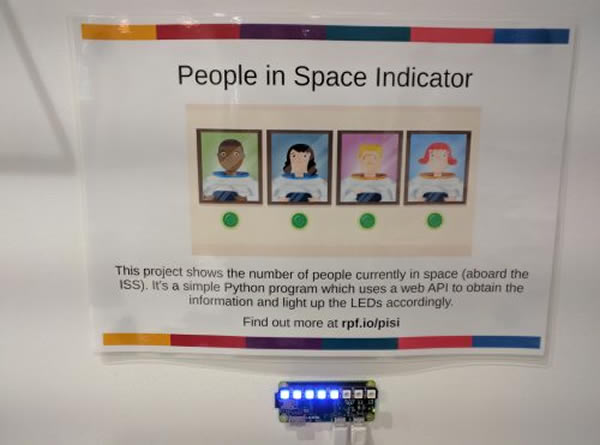
Part Number: Raspberry Pi Zero W
Description
Five years to the day since the launch of the Raspberry Pi (which sold a hundred thousand units in the first day), the Raspberry Pi Foundation has announced the Raspberry Pi Zero W, a new variant of Raspberry Pi Zero with wireless LAN and Bluetooth, priced at only $10.
So what’s the story?
In November 2015, the diminutive $5 entry-level Raspberry Pi, the Raspberry Pi Zero, was launched. This represented a fivefold reduction in cost over the original Model A: it was cheap enough that one was even stuck on the front cover of The MagPi, risking civil insurrection in newsagents up and down the land.
Over the ensuing fifteen months, Zero grew a camera connector and found its way into everything from miniature arcade cabinets to electric skateboards. Many of these use cases need wireless connectivity.

The homebrew “People in Space” indicator in the lobby at Pi Towers is a typical example, with an official wireless dongle hanging off the single USB port: users often end up adding a USB hub to allow them to connect a keyboard, a mouse and a network adapter, and this hub can easily cost more than the Zero itself.
Zero W fixes this problem by integrating more functionality into the core product. It uses the same Cypress CYW43438 wireless chip as Raspberry Pi 3 Model B to provide 802.11n wireless LAN and Bluetooth 4.0 connectivity.
Features:
- 1GHz, single-core CPU
- 512MB RAM
- Mini-HDMI port
- Micro-USB On-The-Go port
- Micro-USB power
- HAT-compatible 40-pin header
- Composite video and reset headers
- CSI camera connector
- 802.11n wireless LAN
- Bluetooth 4.0
The Zero W makes a better general-purpose computer because you’re less likely to need a hub: if you’re using Bluetooth peripherals you might well end up with nothing at all plugged into the USB port. And of course it’s a great platform for experimenting with IoT applications.
Official case
To accompany Raspberry Pi Zero W, we’ve been working with our friends at Kinneir Dufort and T-Zero to create an official injection-moulded case. This shares the same design language as the official case for the Raspberry Pi 3, and features three interchangeable lids:
- A blank one
- One with an aperture to let you access the GPIOs
- One with an aperture and mounting point for a camera
The case set also includes a short camera adapter flexi, and a set of rubber feet to make sure your cased Zero or Zero W doesn’t slide off the desk.